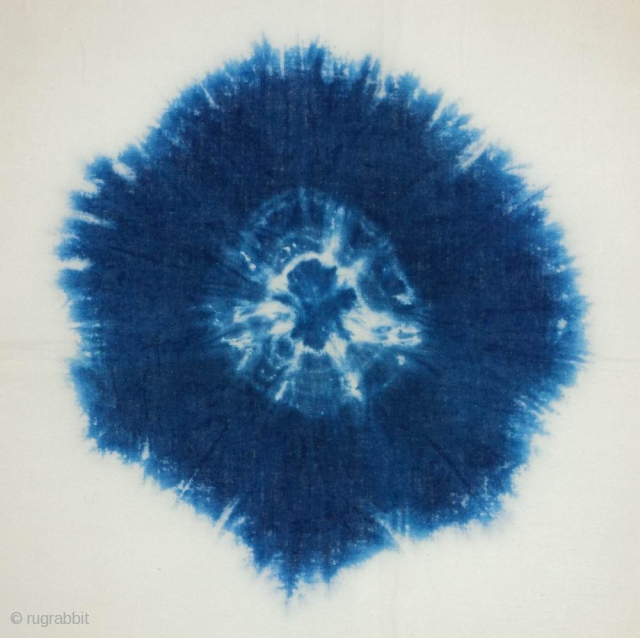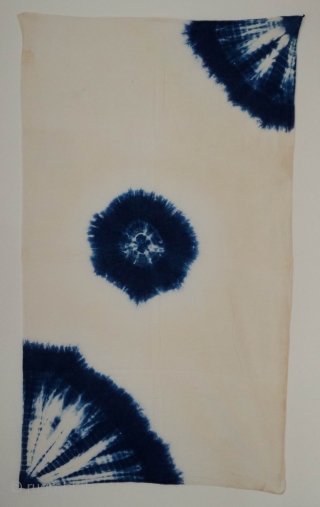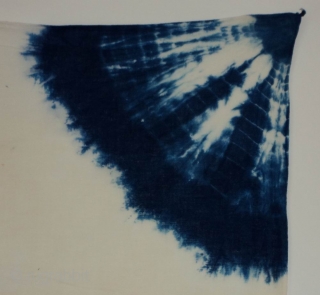Back
Indigo Kumo Shibori panel, Japan, Taisho (c.1920), 117x67cm. The common English translation of the Japanese word shibori is "tie-dye". However, a more accurate translation is "shaped-resist dyeing," which describes the inherent patterning process of manipulating the two-dimensional cloth surface into three-dimensional shapes before compressing them to dye. Diverse shibori techniques are used to obtain different patterns. This piece features large spider-webs of kumo shibori. Kumo shibori has long been known in Japan. a 12th century painting shows a simple hemp garment with a pattern that resembles this type of shibori. It appears frequently in the ukiyo-e (wood block-prints) of the Edo period (1603-1868), which depict the lives of people from all parts of society. In the 19th century, an unusually fine type of pleated and bound kumo shibori dyed in indigo on fine cotton became very fashionable. The present cloth, shows how the ability of a master-dyer can lead to eye-catching results. a single large ‘kumo’, flanked at opposite corners by two mammoth -size kumo-quarters do feature on a white cotton cloth. Condition is good. What counts here, though, is the bold look that radiates from the composition. Imposing, whimsical and great looking.
price:
SOLD
- Home
- Antique Rugs by Region
- Category
- Profiles
- Post Items Free
- Albums
- Benaki Museum of Islamic Art
- Budapest: Ottoman Carpets
- Gulbenkian Museum
- Islamic Carpets. Brooklyn
- Islamic Textiles. Brooklyn
- Konya Museum: Rugs
- MKG, Hamburg
- MMA: Caucasian Carpets
- MMA: Mamluk Carpets
- MMA: Mughal Indian Carpets
- MMA: Ottoman Carpets
- MMA: Safavid Persian Carpets
- MMA: Turkmen Rugs
- McCoy Jones Kilims
- Ottoman textiles. Met
- Philadelphia Museum
- Rugs and Carpets: Berlin
- Seljuqs at the Met
- TIEM, Istanbul: Carpets
- V&A: Classical Carpets
- Vakiflar Carpets: Istanbul
- Baluch Rugs: Indianapolis
- Gallery Exhibitions
- Jaf an Exhibition
- Alberto Levi Gallery
- Andean Textile
- Christie's London: 2016
- Francesca Galloway
- HALI at 40
- ICOC Washington, DC 2018
- Jajims of the Shahsavan
- London Islamic Week April, 2018
- Mongolian Felts
- Navajo Rugs: JB Moore
- Persian Piled Weavings
- SF Tribal & Textile Art Show 2020
- SF Tribal 2019
- Sotheby's: C. Alexander
- Turkish Prayer Rugs
- Turkmen Main Carpets ICOC 2007









